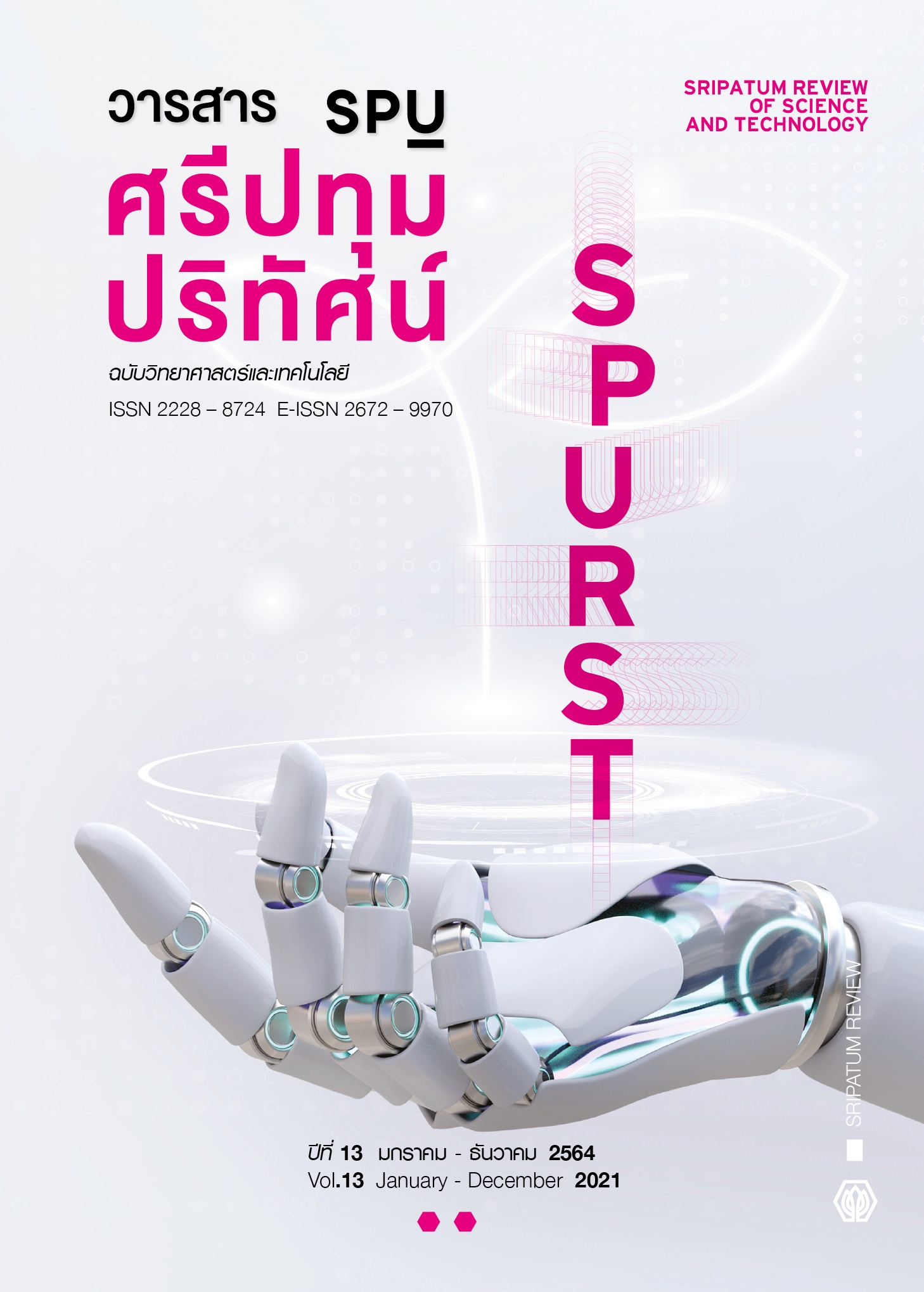The Algorithms for the prototyping of the depression analysis from behavioural observation while conducting the PHQ-9 Assessment via the web application
Main Article Content
Abstract
Depression was a problem that affects a person's life in society. Tools for early screening or diagnosis before entering a medical procedure. The use of the PHQ-9 Assessment was preferred in which the assessor may distort the responses, resulting in incomplete assessment. This research objectives were design and develop algorithms for the prototyping of the analyzing depression trend from behavioral observation while conducting the PHQ-9 assessment via the web application. The research used the experimental research approach and selected sample by purposive method, undergraduate students who obtained consent to volunteer and evaluated the PHQ-9 assessment. The research identified 3 areas of clinical behavior to be studied and the results were used to obtain suitable tools: tools matching between clinical behavior and technology tools. The results were as follows: the behaviors demonstrated during the assessment followed a pattern of clinical consisted of: 1) Facial Emotions, for using in the study of clinical mood/emotion symptoms related to feelings of sadness, depressed faces, depressed, easy to cry by sensing emotions, facial expression changes and movements of: eyes, eyebrows and corners of the mouth, 2) User Behavior Tracking, for using in the study of clinical cognition symptoms related to the concentration of the patient deteriorates, absent-minded, slow or long thought, hesitate, change answer and reaction time through the assessment and apply with the behavior tracking during the PHQ-9 depression assessment through web application , and 3) Head movement, for using in the study of clinical psychomotor symptoms, applying for detect the presence or movement of the head in order to use in the diagnosis of primary depression of students and staff, and support depression diagnosis in clinical efficiency further.
Article Details
References
Alghowinem, S., Goecke, R., Wagner, M., Parkerx, G., and Breakspear, M. (2013). Head Pose and Movement Analysis as an Indicator of Depression. Proceeding of the 2013 Humaine Association Conference on Affective Computing and Intelligent Interaction, 5 September 2013, Geneva, Switzerland, 283 - 288.
Costantini, et al., (2020). Screening for depression in primary care with Patient Health Questionnaire-9 (PHQ-9): a systematic review. Journal of Affective Disorders. 279(15), 473-483.
Department of Mental Health. (2018). Department of Mental Health Annual Report 2018. Bangkok: Department of Mental Health. (in Thai)
Erbe, D., Eichert, H. C., Rietz, C., and Ebert, D. (2016). Interformat reliability of the patient health questionnaire: Validation of the computerized version of the PHQ-9. Internet Interv, 5, 1-4.
Faculty of Medicine Ramathibodi Hospital. (2015). Ramathibodi Essential Psychiatry. Bangkok: Chulalongkorn University. (in Thai)
Giannakakis et al.. (2017). Stress and anxiety detection using facial cues from videos. Biomedical Signal Processing and Control, 31, 89-101.
Jasso-Medrano, J. L., and López-Rosales, F. (2018). Measuring the relationship between social media use and addictive behavior and depression and suicide ideation among university students. Computers in Human Behavior, 87, 183-191.
Lehtinen, V., Riikonen, E., and Lahtinen, E. (1997). Promotion of Mental Health on the European Agenda. Finland: National Research and Development Centre for Welfare and Health.
Meher, S., Kirad, N., Deshpande, T., Patil, P., and S.A.Deshpande, M. (2020). Automatic Depression Level Analysis. International Journal of Research and Analytical Reviews (IJRAR), 7(2), 6.
Muramatsu, K. et al.. (2018) Performance of the Japanese version of the Patient Health Questionnaire-9 (J-PHQ-9) for depression in primary care. General Hospital Psychiatry, 52, 64-69.
Na, P. J., et al.. (2018). The PHQ-9 Item 9 based screening for suicide risk: a validation study of the Patient Health Questionnaire (PHQ)-9 Item 9 with the Columbia Suicide Severity Rating Scale (C-SSRS). J Affect Disord, 232, 34-40.
Reece, A. G., and Danforth, C. M. (2017). Instagram photos reveal predictive markers of depression. EPJ Data Science, 6(1). 1-34.
Schuler, M. et al.. (2018) Assessment of depression before and after inpatient rehabilitation in COPD patients: Psychometric properties of the German version of the Patient Health Questionnaire (PHQ-9/PHQ-2). Journal of Affective Disorders, 232, 268-275.
Scoppetta, O. et al.. (2021) Validity of the patient health questionnaire-2 (PHQ-2) for the detection of depression in primary care in Colombia. Journal of Affective Disorders 278. 576-582.
Thai Health Promotion Foundation. (2020). Thaihealth Watch 2020. Bangkok: Thai Health Promotion Foundation. (in Thai)
Van Vleet et al. (2019). Biases in processing of mood-congruent facial expressions in depression. Psychiatry Research, 275, 143-148.
van Zoonen, W., Verhoeven, J. W. M., and Vliegenthart, R. (2016). How employees use Twitter to talk about work: A typology of work-related tweets. Computers in Human Behavior, 55, 329-339.
Wang, Q., Yang, H., and Yu, Y. (2018). Facial expression video analysis for depression detection in Chinese patients. Journal of Visual Communication and Image Representation, 57, 228-233.
Watzke, B., Heddaeus, D., Steinmann, M., Daubmann, A., Wegscheider, K., and Harter, M. (2020). Does symptom severity matter in stepped and collaborative care for depression? J Affect Disord, 277, 287-295.
WHO. (2019). World Health Statistics 2019: Monitoring health for the SDGs. Switzerland: L’IV Com Sàrl.


